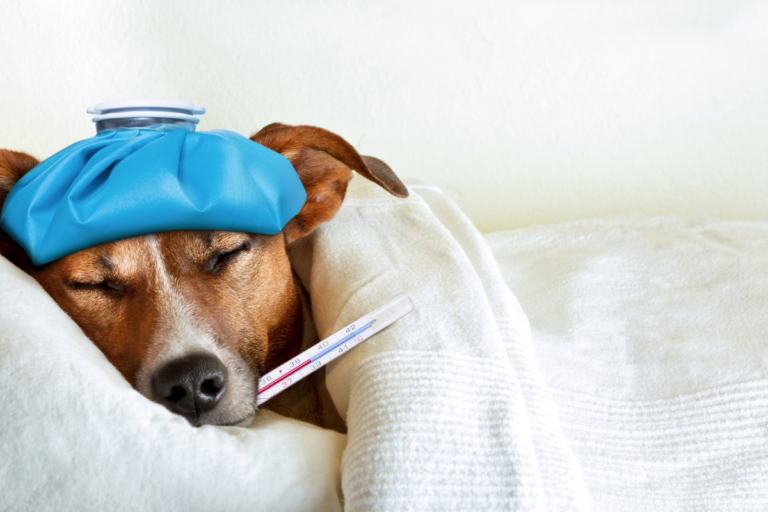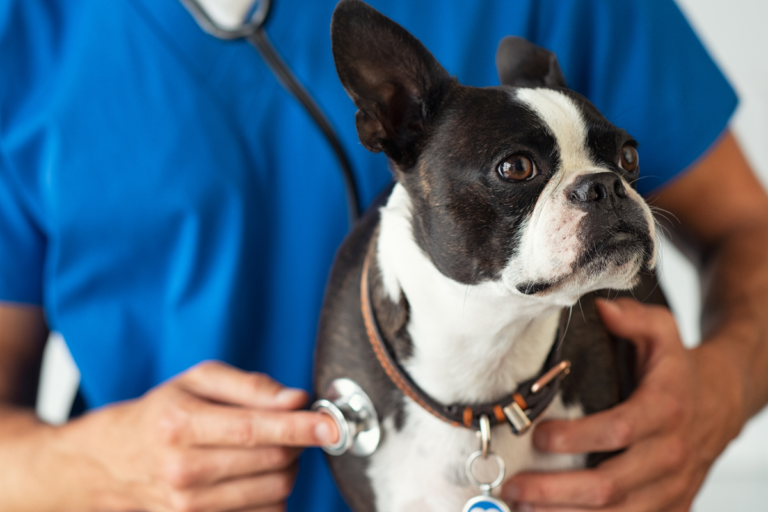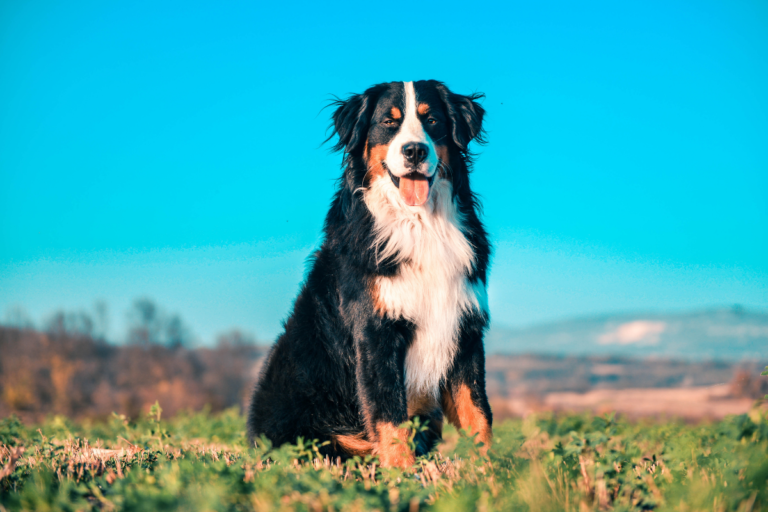Aiming for Optimal Wellness: Navigating Bulldog Health Problems
Understanding Bulldog Health
Taking care of Bulldogs means getting to grips with their specific health quirks. These lovable buddies need a bit more TLC because of their unique genes and the typical health bumps in their journey.
Genetic Challenges in Bulldogs
Bulldogs inherit a fair share of issues. The English Bulldog stands out for having a pretty shallow gene pool thanks to their history. This makes tweaking their health and erasing pesky mutations a real head-scratcher.
| Genetic Factor | Description |
|---|---|
| Low Genetic Diversity | Small founder population and genetic bottlenecks |
| Health Implications | It’s tough to weed out bad mutations and boost overall breed health |
Common Health Issues in Bulldogs
From the get-go, Bulldogs seem to attract a slew of health issues. Some of the biggies are:
- Brachycephalic Syndrome: Flat faces look cute but can turn breathing into a struggle.
- Conformational Birth Defects: These mess with the body’s structure, complicating mobility and comfort.
- Chondrodysplasia: A kind of dwarfism that messes with the bones and joints.
- Teeth Problems: Their cute snouts mean squeezed teeth, leading to dental troubles.
- Skin Issues: Wrinkle power brings on skin fold dermatitis and infections.
- Heart Issues: Breeding drama has added heart problems to the mix.
- Eye Issues: Look out for issues like cherry eye and dry eye.
- Immune System Problems: Bulldogs might have under-performing immune systems.
Don’t forget, Bulldogs also face:
- Hip Dysplasia: When the hip joint doesn’t fit right, causing a hitch in their step.
- Obesity: Those couch potato days and improper chow time can pile on the pounds.
- Digestive Upset: Sensitive stomachs that protest against certain foods.
| Health Issue | Description |
|---|---|
| Brachycephalic Syndrome | Breathing difficulties with flat faces |
| Conformational Birth Defects | Structural hiccups hit mobility |
| Chondrodysplasia | Bone and joint health take a hit |
| Teeth Problems | Packed teeth causing dental dramas |
| Skin Issues | Skin fold dermatitis and possible infections |
| Heart Issues | Breeding woes bring heart problems |
| Eye Issues | Conditions like cherry eye and dry eye |
| Immune System Problems | Shaky immune systems |
| Hip Dysplasia | Hip joint trouble causing aches |
| Obesity | Coming from a lazy lifestyle and dodgy diet |
| Digestive Upset | Triggered by sensitivity to certain eats |
For more Bulldog health scoop and to see what’s up with breeds similarly challenged, check out some related health problems or get breed-specific advice for buddies like Cavaliers.
Keeping an eye out and staying informed can help our Bulldogs wag through life with fewer hassles. Regular vet checkups, good grub, and a solid understanding of their genetics can seriously up their life game (Vets Love Pets).
Lifespan and Quality of Life
Average Lifespan of Bulldogs
Bulldogs don’t tend to grace us with their lovable presence as long as some other dogs, and that’s mostly due to health quirks built into their genetics. English Bulldogs, for instance, stick around for about 8.4 years. That’s not very long, thanks to a slew of genetic health quirks these guys face. Being a Bulldog parent means getting cozy with the reality of these statistics so we can pamper our pooches in the best ways possible.
| Bulldog Breed | Median Lifespan (Years) |
|---|---|
| English Bulldog | 8.4 |
| French Bulldog | 9 – 12 |
| American Bulldog | 10 – 15 |
Want more juicy Bulldog health deets? Check out our breakdown of english bulldog health problems.
Impact of Genetic Health on Lifespan
Bulldogs are like a cocktail of adorable features that, sadly, come with a menu of health issues. All those squishy faces and stocky bodies are cute but come with challenges. Many Bulldogs deal with things like hip dysplasia, love handles (a.k.a obesity), and tummy troubles—a package deal from years of selective breeding.
The smooshed face look (or ‘brachycephalic’ if you wanna impress at your next dog park meetup) means Bulldogs can have a rough time with breathing. This includes a condition called Brachycephalic airway syndrome (BAS), which can really mess with their ability to huff and puff, especially when it’s hot or they’re chasing squirrels. Oh, and let’s not forget about skin folds that can get itchy, funky eyes with cherry eye, and wonky hips.
Keeping our Bullies healthy means regular vet visits, watching what they munch on, and ensuring they get just the right amount of zoomies. For tips on bulldog TLC, have a peek at our dog diseases guides.
Jumping on these health issues early can make a world of difference, keeping your Bulldog wagging longer. Want to know how other pooches compare in the health lottery? Check out our roundup on the healthiest dog breeds.
Nutrition and Weight Management
Feeding Guidelines for Bulldogs
Alright folks, let’s talk Bulldogs and their chow. We all know these adorable wrinkly companions can have their fair share of health woes—hip dysplasia and obesity to name a few. That’s why feeding them right is super important. Try this on for size: Bulldogs need about ½ cup of top-notch dog grub for every pound they weigh, spread out across the day to keep tummy troubles at bay.
Don’t forget, how much food a Bulldog needs can depend on their energy levels and how much they lounge around. If your pup’s got a bit of a lazy streak, maybe dial back the portions. Lots of Bulldogs do well with meals made from lamb, beef, or fish, since some furballs get the sniffles from chicken in cheaper foods (Bulldog Grade).
Here’s a handy table for Bulldog feeding based on weight:
| Weight (lbs) | Daily Food Intake (cups) |
|---|---|
| 20 lbs | 2.5 – 3 |
| 40 lbs | 5 – 6 |
| 60 lbs | 7.5 – 9 |
| 80 lbs | 10 – 12 |
For those mature Bulldogs, big dog formulas work wonders, even if they’re built like medium-sized sacks of potatoes. This helps keep their weight in check and meets all their nutritional needs. Every dog is different, so always hit up your vet for a meal plan that’s custom-fit.
Importance of Nutritious Diet
Now, what makes that wagging tail and healthy glow? A rock-solid diet does the trick! Top-shelf dog food usually comes packed with all the goodies Bulldogs need, making extra supplements a last resort. But hey, a dash of organic coconut oil might just become your dog’s best friend for keeping that coat silky and shedding under control.
Good nutrition isn’t just about full bellies—it’s about keeping them out of the vet’s office too. Properly fueling your Bulldog means loading up on proteins, healthy fats, and enough fiber to keep things moving. Steer clear of dog food that’s basically sawdust with some flavoring—avoiding those artificial fillers can save your Bulldog from pesky allergies and tummy aches.
Need more health tips for your four-legged buddy? Check out our posts on overweight dog management and essential canine dental care. Feeding your Bulldog the good stuff and managing their weight isn’t just about looking sharp—it’s the ticket to a longer, happier game of fetch.
Respiratory and Breathing Issues
Bulldogs, whether you’re a fan of the French, English, or American versions, all share a little quirk – breathing’s a bit tricky for them. Their cute, squished noses, while adorable, make catching their breath a bit of a challenge.
Brachycephalic Syndrome
Yep, there’s actually a fancy name for it: Brachycephalic Syndrome, in Bulldogs and their squishy-faced pals. These dogs have shorter noses and tiny nostrils, which can make their airways a bit of a mess. It’s no wonder you hear a lot of snorting and wheezing from them. Because of this, they might struggle with a bit of panting, feel uncomfortable most of the time, have a hard time keeping up during a walk, and even find eating a bit of a chore (Urban Pet Hospital).
What to Watch For:
- Heavy panting
- Snoring like a chainsaw
- Retching like they’ve had one too many snacks
- Gasping for air
- Getting tired out from just thinking about exercise
Creating a chill hangout spot, keeping their sprints short, and lending an ear for their breathing quirks go a long way in helping these guys out. Vets Love Pets suggests that keeping them comfy in the heat of the summer is crucial to not making things harder for them.
Tackling Breathing Woes
Get ahead of the game when managing Bulldog breathing problems by knowing what sets it off and how to deal with it.
Helpful Hints:
- Keep it Cool: Make sure these pups stay away from the blazing sun, especially since sweating it out isn’t their strong suit (Pet Plate).
- Easy on the Workouts: Bulldogs aren’t marathon runners. Gentle games or casual strolls keep them in chowder without wheezing.
- Watch the Waistline: Extra pounds equal more struggle to breathe. Best to keep meals in check and their waistlines lean (Vets Love Pets).
- Considering Surgery: For some, a trip to the doggy ER might be necessary to clear the airways (Lucy Pet Products).
Bulldog Breathing Bumps:
| Trouble | Symptoms | Handy Tips |
|---|---|---|
| Brachycephalic Airway Issues | Panting, snoring, uncomfortable | Keep as cool as possible and don’t push them too hard |
| Struggles with Exercise | Finding it hard to catch breath | Stick to low-key exercise and ensure they don’t carry extra weight |
| Food-Related Challenges | Eating becomes tricky | Offer smaller meals often, with the vet on speed-dial for advice |
Looking for guidance to care for your snuffly buddy? Check out some other reads like dog heart disease, dog diabetes symptoms, and dog gum disease. By grasping our Bulldogs’ health quirks and getting out ahead of them, we’re paving the way to a happier, healthier life for these lovable loafers.
Skin and Coat Care
Keeping a bulldog’s skin and coat in tip-top shape is super important to dodge pesky problems like dermatitis and infections. Thanks to their adorable wrinkles, bulldogs are sort of like little skin taskmasters.
Dealing with Skin Fold Hassles
Skin fold dermatitis is just fancy talk for itchy, irritated spots in those cute face wrinkles. These folds are like VIP lounges for dirt and germs and can throw quite the party if left uncleaned.
Here’s the plan to keep dermatitis away:
- Clean Like a Pro: Every day, grab a damp cloth or something your vet swears by and give those folds a good wipe, shooing away dirt and sogginess.
- Get Dry: After the cleanup, ensure those folds are dry as a desert; any leftover moisture is just an invitation for bacterial growth.
- Slather On Some Love: Medicated creams aren’t just for humans—your vet might hook you up with some to show those folds some TLC.
Signs of Trouble:
- Red and puffy spots
- Smelly surprises
- Gooey or crusty appearances
Stopping Skin Infections in Their Tracks
Handling skin infections? It’s all about living clean and having a little prevention dance party.
- Bath Time: Keep your furry friend fresh with regular baths using a gentle, hypoallergenic shampoo—don’t skip the folds.
- Eat Well: Good food isn’t just for humans. A balanced bulldog diet equals a happy coat. Wondering what’s best? Peek at our nutrition and weight management page.
- Spot-Check Often: Regularly give your bulldog the once-over, checking for any signs that scream, “Help!”
Watch Out For This:
- Can’t stop, won’t stop scratching or licking
- Leaky pus or other fluids
- Bye-bye fur in certain spots
If you’re hungry for more detailed info on sniffles and doggie ills, our dog diseases and symptoms guide is a treasure chest of info.
Stick with these tips, and you and your bulldog can live happily ever after, skipping those annoying skin dramas. For more breed-specific health geekery, take a gander at our healthiest dog breeds page.
Tag your vet in for any bulldog-specific tips that only your pooch might need. For an extra dose of bulldog health advice, have a gander at our stuff on english bulldog health problems.
Bone and Joint Drama with Bulldogs
Ah, the bulldog – those adorably squishy faces and endearing personalities make them irresistible, right? But along with their charming antics, we also have to face some not-so-charming health quirks, particularly in the bone and joint department. Bulldogs, bless their stout little bodies, often wrestle with issues that can cramp their style and zest for life.
The Hip Dysplasia Debacle
If you’ve got a bulldog waddling around, you’ve probably heard of hip dysplasia – it’s as common in bulldogs as drool on your trousers. This pesky problem can make your bulldog wince in pain, limp around, or act like a couch potato. Imagine trying to persuade your bulldog to jump into the car or tackle a staircase, it’s like asking a cat to swim.
What to Watch Out For:
- Hip discomfort
- Limping like they’ve forgotten how to bulldog
- Struggling to stand up or lay down
- Lazing about more than usual
- Avoiding stairs like the plague
Quick fun fact: your snoozing buddy can benefit big time from regular vet visits. Your vet’s keen eye can spot hip dysplasia early and recommend ways to tackle it — from tweaking Lassie’s diet to considering surgery if things get really hairy. Keeping them trim and active with walks not only helps hips but keeps bulldog smiles, smiles.
| Strategy | Why It Works |
|---|---|
| Weight Management | Less weight means less stress on those tiny hips. |
| Low-Impact Exercise | Walking’s perfect, keeps the joints moving without busting them. |
| Surgery | Only if critically needed, but sometimes the last resort for new hips. |
Want to dig deeper? Our guide on keeping German shepherd hips in check is worth a look.
Bulldog Joint Support
Let’s not wait till we’re in the thick of it. Keeping those joints moving like well-oiled machines means taking the initiative before symptoms invite themselves to the party.
Let’s Help Those Joints:
- Walkies and Swimmies: Take your bulldog for slow strolls or a splashy swim. Minimize wild sprints and jumps – they’re not part of the bulldog dance.
- Watch the Waistline: Feeding healthy portions ensures Munchkin remains svelte and sprightly. Too many snacks, and you’re looking at bulldog tubbiness, which knees and hips really dislike. Smaller meals and steering clear of table scraps keep the tummy happy (Wise Words from Bulldog Grade). Our chat on keeping mastiffs lean might come in handy.
- Joint Juju: Your vet might have magical supplements to keep those cartilage cushions in tip-top shaking condition.
- Sweet Dreams: Snug beds are God-sent for resting bulldog bones and joints.
Given their one-of-a-kind physique, they might need a little extra TLC in the routine department (Lucy Pet Products’ Bulldog Chronicles).
Tasty Boosts for Bulldogs:
- Fishy Omega-3s: Fish oil doesn’t just taste bad; it fights those nasty joint inflammations.
- Glucosamine and Chondroitin: The joint superheroes, working to patch up and nurture cartilage.
Start early, and your bulldog might just surprise you with their healthy joints and contagious energy. Hungry for more nutrition tips? Our piece on the most health-conscious dog breeds will give you the lowdown on canine dietary needs and how they differ.






